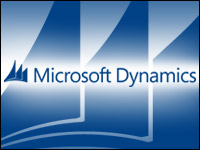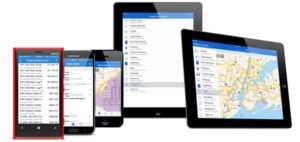
Microsoft last week revealed some new details about Dynamics CRM 2016, emphasizing functionality designed to empower customer service agents.
It will be released in both cloud and on-premises versions in Q4, said Bill Patterson, general manager of Microsoft Dynamics. It will be available as a standalone application or as an add-on to Office 365.
Dynamics CRM 2016 will focus on three core areas:
- engagement center experiences, with a new interactive service hub and an enhanced Unified Service Desk;
- insights and information, through a native knowledge management system for CRM, analytics, and leveraging of Azure Machine Learning; and
- new ways to engage with customers, including working through social media.
Microsoft also will tighten integration with Office 365 and Power BI, and introduce a new, low-cost employee self-service license.
“This is a big release for Microsoft,” said Rebecca Wettemann, vice president of research at Nucleus Research.
While the embedded business intelligence capabilities are taking advantage of the full Office suite, “it’s about more than just the sum of its parts, as … other vendors have had analytics capabilities for a while,” she told CRM Buyer. “This is evidence of Satya Nadella bringing the whole of the Microsoft portfolio to bear on CRM.”
New Features in Dynamics CRM 2016
Users can access Office 365 applications and Power BI within Dynamics CRM 2016, Patterson said.
The package’s new interactive service hub for engagement centers will deliver tailored application experiences for Tier 1 and Tier 2+ agents.
They will have real-time dashboards displaying a single view of their workload. Interactive charts will provide a visual representation of work items using a variety of filters — e.g., what’s most important, next actions, and ways to speed up resolutions.
Agents will have an enhanced Unified Service Desk providing access to Skype and Yammer, so they can chat with customers and coworkers to resolve issues.
Office 365, Power BI and Excel will let agents track progress, share best practices and forecast customer needs.
Dynamics CRM 2016 will include a Service Productivity Solution with a programmatic license through the Dynamics CRM Online Professional Add-On to Office 365, which will let users leverage Office 365 and Power BI, for US$50 per user per month. It will be available for Office 365 Plan E3, E5 and Business Premium licenses.
Dynamics CRM 2016 will leverage the Cortana Analytics Suite and Power BI to provide customers with additional insights, Patterson noted.
The Power of Machine Learning
Azure Machine learning will let organizations identify patterns over time from issues that crop up, speeding time to resolution and improving performance.
It will let agents leverage social channels to track and analyze relevant sentiment through Microsoft Social Engagement.
Agents will be able to engage directly with customers on Facebook, Twitter and other social media, and they will be able to convert issues brought up in social channels into cases.
The Azure Machine Learning and Text Analytics capabilities initially will be available to customers using Microsoft’s CRM Online service, Microsoft Dynamics’ Patterson told CRM Buyer. Customers must provide their Microsoft Azure subscription information, and establish a connection with the service through a configuration utility from Microsoft.
Microsoft “wants to provide choice for customers as a priority around CRM,” Nucleus Research’s Wettemann said. “They do recognize that cloud is going to increasingly be the choice of customers, but will support more than just SaaS.”
Dynamics CRM 2016 and the IoT
Some customers reportedly are creating Internet of Things solutions using Dynamics CRM 2016.
The CRM package will have to be combined with the Microsoft Azure IoT Suite for that purpose, Patterson said.
The Azure IoT Suite “offers customers the ability to capture, analyze and interpret data from across a collection of Internet-connected devices,” he pointed out.
It lets users remotely monitor, capture and detect data streams and anomalies originating on-device or in-signal, Patterson explained, and those signals “can trigger events and logic within our Dynamics CRM solution, such as customer service case generation or field service appointment generation.”























































